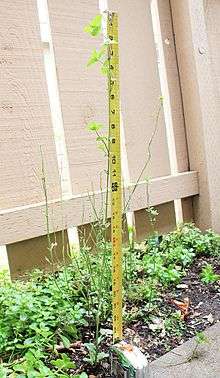Yerba buena

Yerba buena or hierba buena is the Spanish name for a number of aromatic plants, most of which belong to the mint family. Yerba buena translates as "good herb". The specific plant species regarded as yerba buena varies from region to region, depending on what grows wild in the surrounding landscape, or which species is customarily grown in local gardens. Perhaps the most common variation of this plant is spearmint (Mentha spicata). The term has been (and is currently) used to cover a number of aromatic true mints and mint relatives of the genera Clinopodium, Satureja or Micromeria. All plants so named have medicinal properties, and some have culinary value as herbal teas or seasonings as well.
Local variants
In the western United States, yerba buena most often refers to the species Clinopodium douglasii[1] (synonyms: Satureja douglasii, Micromeria douglasii), but may also refer to Eriodictyon californicum, which is not a member of the mint family.
In parts of Central America yerba buena often refers to Mentha citrata, a true mint sometimes called "bergamot mint" with a strong citrus-like aroma that is used medicinally and as a cooking herb and tea.
In Cuba, yerba buena generally refers to Mentha nemorosa, a popular plant also known as large apple mint, foxtail mint, hairy mint, woolly mint or, simply, Cuban mint.
In Puerto Rico a close relative of traditional culinary savory, Satureja viminea, is sometimes used.
References
- ↑ Online link to The Jepson Manual eFlora = http://ucjeps.berkeley.edu/eflora/eflora_display.php?tid=80483 accessed 09 March 2016